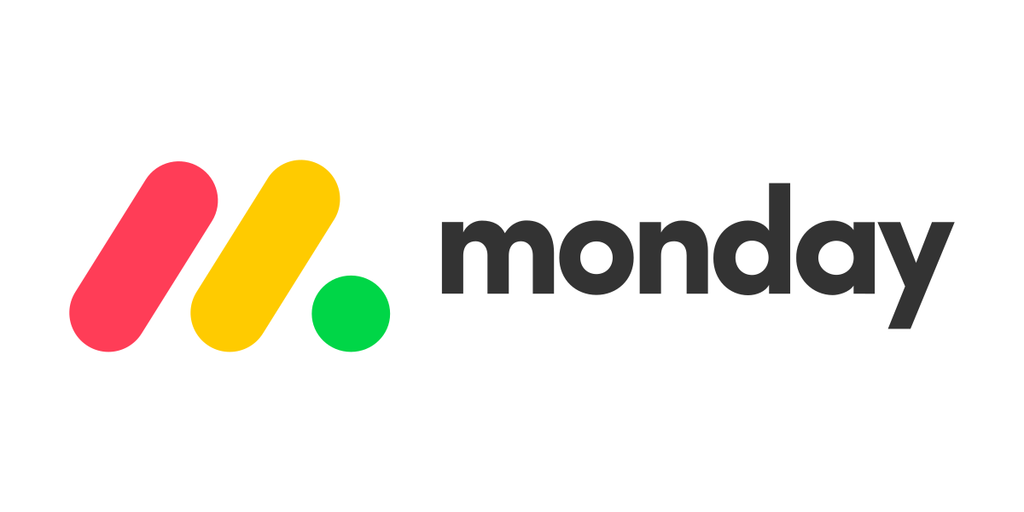- Home
- Services
Services

Microsoft To Do Get a List Integration
$0.00
To create an explanation in HTML formatting, here is a structured explanation of what can be done with the Microsoft To Do API endpoint "Get a List" and the problems it can solve: ```html Microsoft To Do API: Get a List Understanding the "Get a List" Endpoint in Microsoft To Do API The Microsoft To Do API provides a suite of func...

Microsoft To Do Get a Task Integration
$0.00
Using the Microsoft To Do API to Get a Task The Microsoft To Do API is a service that allows developers to integrate their applications with Microsoft To Do, a task management app that helps users to stay organized and manage their day-to-day tasks effectively. One of the essential endpoints in this API is the "Get a Task" endpoint. This en...

Microsoft To Do List Attachments Integration
$0.00
Utilizing the Microsoft To Do API: List Attachments Endpoint The Microsoft To Do API provides a List Attachments endpoint which can be an essential tool for developers who want to enhance the functionality of their applications, particularly those related to task and project management. This endpoint allows you to retrieve a collection of atta...

Microsoft To Do Make an API Call Integration
$0.00
Utilizing the Microsoft To Do API Endpoint: Make an API Call The Microsoft To Do API endpoint for making an API call is a powerful tool that allows developers to interact with Microsoft To Do, a task management application. This endpoint is part of the Microsoft Graph API, a unified interface for accessing data and insights in the Microsoft 365 ...

Microsoft To Do Search Lists Integration
$0.00
Utilizing the Microsoft To-Do API "Search Lists" Endpoint Microsoft To-Do is a task management application that helps users organize their day-to-day activities and work-related tasks. One of the essential features enabling developers to interact with Microsoft To-Do is the API, which exposes various endpoints to programmatically manipulate tas...

Microsoft To Do Search Overdue Tasks Integration
$0.00
Overview of the Microsoft To-Do API: Search Overdue Tasks Endpoint The Microsoft To-Do API is a service that allows developers to interface with Microsoft To-Do, a task management application developed by Microsoft. One of the endpoints provided by this API is the 'Search Overdue Tasks' endpoint, which is designed to find tasks that are past th...

Microsoft To Do Search Tasks Integration
$0.00
Utilizing the Microsoft To Do API Endpoint: Search Tasks Microsoft To Do is an intelligent task management app that allows users to manage their daily tasks and activities efficiently. One of the capabilities offered by Microsoft To Do is its API, specifically the 'Search Tasks' endpoint. This functionality is designed to enable developers and ...

Microsoft To Do Update a List Integration
$0.00
Microsoft To Do API: Update a List Endpoint The Update a List endpoint in the Microsoft To Do API is a powerful tool for developers looking to create or enhance applications with advanced task management features. Through this endpoint, developers can programmatically update the details of an existing task list within a user's Microsoft To Do ac...

Microsoft To Do Update a Task Integration
$0.00
Overview of Microsoft To-Do API's Update a Task Endpoint Microsoft To-Do API's "Update a Task" endpoint is a powerful tool for developers working on task management applications. This API endpoint enables developers to programmatically update the details of an existing task within Microsoft To-Do. By using this endpoint, various attributes of a...

Microsoft To Do Watch Tasks Integration
$0.00
Microsoft To Do API: Watch Tasks Endpoint Utilizing the Microsoft To Do API: Watch Tasks Endpoint The Microsoft To Do API provides numerous endpoints that allow developers to integrate and interact with user task data in Microsoft To Do. One of these endpoints is the Watch Tasks endpoint. This endpoint is designed to h...
Mobile Payment Solutions

Mobile Payment Solutions
$0.00
Use a mobile credit card reader to accept payments on-the-go Take payments anywhere your customers are with an easy-to-use mobile credit card reader that attaches directly to your smartphone or tablet. It’s the perfect add-on to a stationary credit card terminal or point of sale system and it’s a great stand-alone option for certain small bus...

monday.com
$0.00
Monday.com Implementation & Integration | Consultants In-A-Box Streamline Work with Monday.com: Smarter Work OS, Faster Results Monday.com is a no-code Work OS that brings people, processes, and data into one visual workspace so teams stop losing time to scattered spreadsheets, long email threads, and disconnected apps. ...

Monday.com Add a Column to a Board Integration
$0.00
Add a Column to a Board | Consultants In-A-Box Turn Manual Board Changes into Automated Workflows: Add Columns Programmatically Adding a column to a project board sounds simple, but in mid-sized and large organizations it becomes a recurring manual task that drains time, introduces inconsistencies, and slows down responsiven...

Monday.com Add a File to a File Column Value Integration
$0.00
Add Files to Monday.com File Columns | Consultants In-A-Box Attach Files Automatically in Monday.com for Faster Collaboration Centralizing documents where work happens reduces friction, speeds decisions, and keeps teams aligned. Automatically attaching files to Monday.com file columns turns a common administrative chore into...

Monday.com Add a File to an Update Integration
$0.00
Monday.com File Attach Integration | Consultants In-A-Box Automate File Attachments in Monday.com to Speed Collaboration and Reduce Manual Work Attaching the right document to the right conversation sounds simple — until teams are juggling multiple drives, email threads, and versions. Automating file attachments into Monday....

Monday.com Add Board Subscribers Integration
$0.00
Automate Board Subscriptions in Monday.com | Consultants In-A-Box Stop Manual Admin Work: Automatically Subscribe the Right People to the Right Monday.com Boards Keeping people informed and connected to the right projects is essential — but the work of managing board access and subscriptions often falls into the “invisible” ...
Monday.com Consulting

Monday.com Consulting
$0.00
Monday.com Implementation | Consultants In-A-Box Make Work Visible and Automated: Monday.com Implementation That Delivers Business Efficiency Monday.com is a flexible work management platform that turns chaotic processes into clear, accountable workflows. It gives teams a single place to plan, track, and deliver work — but l...

Monday.com Create a Board Integration
$0.00
Automated Board Creation for monday.com | Consultants In-A-Box Automated Board Creation for monday.com: Streamline Projects, Reduce Manual Work, Scale Faster Creating consistent project workspaces is a simple idea with complicated consequences. Manually building boards for every client, product release, or internal initiativ...

Monday.com Create a Group Integration
$0.00
Monday.com Create a Group Integration | Consultants In-A-Box Automate Team Structure: Create Groups in Monday.com Automatically to Speed Work and Reduce Errors Creating the right structure in a work management system is a small step that produces outsized results. The Create a Group integration for Monday.com turns a repetit...

Monday.com Create a Subitem Integration
$0.00
Monday.com Subitem Automation | Consultants In-A-Box Turn Complex Projects into Clear Action: Subitem Automation for Monday.com Breaking work into manageable pieces is the difference between projects that stall and projects that move fast. The Create a Subitem capability in Monday.com lets teams automatically generate nested...

Monday.com Create an Item Integration
$0.00
Monday.com Create Item Automation | Consultants In-A-Box Automate Monday.com Item Creation to Speed Workflows and Boost Business Efficiency Creating items in Monday.com is one of those daily tasks that silently consumes time across sales, support, HR, procurement, and operations. When that work is manual—copying leads from a...

Monday.com Create an Update Integration
$0.00
Monday.com Create an Update | Consultants In-A-Box Automatically Capture Progress and Keep Teams Aligned with Monday.com's "Create an Update" The "Create an Update" capability in Monday.com lets systems and automations post activity directly to task cards, project items, or pulse feeds so the story of work is visible, contex...

Monday.com Create or Get a Tag Integration
$0.00
Monday.com Tag Automation | Consultants In-A-Box Automate Tag Management in Monday.com to Boost Team Efficiency Tags are small labels with outsized impact. In Monday.com, they organize work, drive filters and dashboards, and make reporting actionable. But as organizations scale—adding projects, teams, and integrations—manual...

Monday.com Delete or Archive an Item Integration
$0.00
Monday.com Delete or Archive Item API | Consultants In-A-Box Keep Boards Clean and Teams Focused with Automated Item Deletion & Archiving The ability to remove or archive items in Monday.com programmatically turns routine board maintenance into a strategic advantage. Instead of asking people to scroll, filter, and decide...

Monday.com Download a File Integration
$0.00
Monday.com Download a File Integration | Consultants In-A-Box Automate File Retrieval from Monday.com to Cut Manual Work and Unlock Insights The Monday.com "Download a File" integration turns attachments on boards into actionable assets you can move, analyze, and store automatically. Instead of a team member manually sa...

Monday.com Duplicate a Board Integration
$0.00
Automated Board Duplication | Consultants In-A-Box Duplicate Boards Automatically to Launch Projects Faster and Scale Consistently Duplicating a board inside a work management platform might sound like a small feature, but when it’s automated and tied into your broader systems it becomes a leverage point for predictable, rep...

Monday.com Duplicate a Group Integration
$0.00
Duplicate Groups in Monday.com to Automate Workflows | Consultants In-A-Box Duplicate Groups in Monday.com: Faster Rollouts, Fewer Mistakes, Better Team Productivity Duplicating a group inside Monday.com is often treated as a simple convenience — a quick way to copy a checklist or a sprint backlog. But when you make duplicat...

Monday.com Duplicate an Item Integration
$0.00
Monday.com Duplicate an Item Automation | Consultants In-A-Box Cut Repetition and Improve Consistency: Automate Item Duplication in Monday.com Duplicating items in Monday.com is a simple idea with outsized impact: reuse a proven task, checklist, or template without retyping content or reconfiguring fields. For teams that run...
Collections
- 0CodeKit Integrations
- Accounting
- ACH Processing
- Active Campaign
- Ai Automations and Integrations
- Aircall
- All Integrations
- Annuities
- ATS
- Auto & Home
- BI and Analytics
- Brand Management
- Bullhorn Integration Endpoints
- Business Infrastructure
- Business Operations
- Business Retirement Plans
- Business Systems
- Card Access
- CCaaS
- Clio Integrations
- Cloud Services
- Connectivity, MPLS, Private Line
- Cost Reduction
- CPaaS/SIP
- Customer Relationship Management
- Data Center
- Developer Platforms
- Development
- E-Commerce
- E-Commerce Software
- eREIT
- Field Service Automations and Integrations
- Finance Automations and Integrations
- Financial
- Fire Alarm Systems
- Fleet Tracking
- FTP Hosting
- Gift Card & Loyalty
- Google Sheets
- Graphic Design
- Health
- Healthcare Software
- HR and HCM Automations and Integrations
- HR Software
- Human Resources
- Implemenation
- Insurance
- Integrate RingCentral With Monday.com
- Integrations
- International
- Intrusion Systems
- Investments
- Invoicing
- Invoicing and Contract Software
- Lead Generation
- Learning Management
- Legal
- Legal Services
- Long Term Care
- Managed Investments
- Managed Services
- Marketing
- Marketing
- Marketing Automations and Integrations
- Micro Funding
- Mobile Payments
- Mobility/IoT
- Monday.com Integrations
- Mutual Funds
- Other
- Others Software
- Outsourced Sales
- Pay Per Click
- Payment Processing
- Payroll
- Phone Systems
- Photography
- Pre-Paid Legal
- Print & Promotional
- Process Implementation
- Product Management
- Productivity
- Productivity & Efficiency Improvement
- Project Management
- Recuritment
- Recurring Payments
- RingCentral Integrations
- Sales Software
- Sales Training
- SD-WAN
- Search Engine Optimization
- Security
- Security and IT Management
- Security Systems
- Sling Scheduling Features
- SMS Communication
- Social Media
- Social Media Management
- Telecommunications Automations and Integrations
- Term Life
- Top Products
- Twilio Integrations
- UCaaS
- Video Conferencing
- Video Production
- Video Surveillance
- Web Development
- Web Hosting
- Webinar & Screen Sharing
- Workflow Training
- Zoho
- Zoho CRM Integrations
- Zoho Email & Collaboration
- Zoho Finance
- Zoho HR
- Zoho Legal
- Zoho Marketing
- Zoho Sales
- Zoho Service
- Zoho Suites
Brands
- 019sms
- 0CodeKit
- 1001fx
- 10to8
- 123FormBuilder
- 1CRM
- 1net CRM
- 29 Next
- 2all CMS
- 3Scribe Transcription
- 4leads
- 602 Sofa
- 88stacks Image Generator
- 8x8
- A&A/FITPASS Calltracking
- Abby
- ABRA FlexiBee
- Abyssale
- AcademyOcean
- Accelo
- Access Charity CRM
- Action Network
- Active Campaign
- ActiveDemand
- ActiveTrail
- Adalo
- AddMe Reviews
- ADManager Plus
- Adobe Acrobat Sign
- Adobe CC Libraries
- Adobe Commerce
- AdRoll
- AfterShip
- Agencyjoy
- Agendor
- Agile CRM
- AgilePlace
- Aha!
- AidaForm
- Aircall
- Airmeet
- Airparser
- AirTable
- AITable
- Alegra
- Alexa Internet
- All-Images.ai
- Allmysms
- Amazing Marvin
- Amazon Lambda
- Amazon SES
- Amazon SNS
- AmeriCommerce
- Amplitude
- Anabix CRM
- Android
- AnnounceKit
- Apaleo
- Apifonica
- Apify
- APITemplate.io
- Apolearn LMS
- Apollo
- Apple iOS
- Apple Map Links
- Appointlet
- AppSheet
- ApptiveGrid
- ApuTime
- ArcGIS Field Maps
- Archive
- Arduino
- Arlo
- Asaas
- Asana
- Aspose
- Atarim
- Atera
- AtSpoke
- Attio
- Aunoa
- Aurora Solar
- Auth0
- Authvia
- Automizy
- Autopilot
- Avaza
- Avochato
- Award Force
- Backendless
- Bamboo HR
- Bambuser
- Bannerbear
- Banqup
- Barcodes
- Basecamp 2
- Basecamp 3
- BaseLinker
- Baserow
- Beamer
- Becon
- Beds24
- Beehiiv
- Beeminder
- BeLazy
- Bellbird
- Betty Blocks
- Bexio
- Bidsketch
- Big Cartel
- Bigin by Zoho CRM
- BigMailer
- BigMarker
- BigML
- BigQuery
- Billit
- Billplz
- Billsby
- Binance
- Bind ERP
- Bing Spell Check
- Bitbucket
- Bitly
- Bitrix24
- Bitskout
- BizMachine
- Blink
- BlockSurvey
- Blogger
- BlueLink
- Bluesky by Unshape
- Boldem
- Bolt IoT
- Bonusly
- Book Like A Boss
- Bookafy
- Boomerangme
- BoondManager
- Booqable
- Boost Note
- Borisbot
- BotDistrikt
- Botsheets
- Botsify
- BotStar
- Bouncer
- Box
- Brain Pod AI
- Braintree
- Brave
- Breeze
- Brevo
- Brightflag
- BringData.co
- Browse AI
- BSI
- Bubble
- Buffer
- BugHerd
- BulkGate
- Bullet
- Bullhorn
- Burst SMS
- Businesslogic.online
- Byteplant Address Validator
- Byteplant Email Validator
- Byteplant Phone Validator
- Caflou
- Cal.Com
- Calendly
- California Bank & Trust
- Call Assist
- Call Tracking Metrics
- Calley
- CallHippo
- Callingly
- CallRail
- Campaign Monitor
- Candu
- Canny
- Canvas LMS
- Capsule CRM
- Captain Data
- Captivate
- Carbone
- Cargoboard Shipping & Tracking
- Caspio
- CDP & CRM CareCloud
- Celoxis
- Cflow
- Channels
- Chargebee
- ChargeOver
- ChartMogul
- Chatbase
- ChatBot
- Chatforma
- Chatfuel
- ChatGuru
- Chatra
- ChatSonic
- Chatwork
- Checkr
- Checkvist
- Chiavistello
- ChytryStart
- Cin7
- Circle
- Cisco Webex
- Citibank
- Citrix ShareFile
- Cituro
- Clearbit
- Clearout
- Clepher
- CleverReach
- Clicfans
- Clickatell
- ClickFunnels
- ClickMeeting
- ClickSend SMS
- Clicksign
- ClickUp
- Clieent® CRM
- Cliengo
- Clientary
- Clientjoy
- Clio
- Clio Manage
- Clockify
- Close CRM
- Cloud BOT
- CloudConvert
- Cloudflare
- Cloudinary
- Cloudmersive
- Cloudpress
- CloudTalk
- Clover POS
- Cloze
- ClubPlanner
- Clust
- CNPJá
- Coassemble
- Coda
- CodeGPT
- Cognito Forms
- CoinMarketCap
- Colligso TextIn
- Colligso WalletIn
- Comeet
- CommCare
- CommerceHQ
- CommPeak
- CompanyHub
- Confiban
- Confluence
- Constant Contact
- Consultants In-A-Box
- consultantsinabox
- Contact Form 7
- Contacts+
- Contentful
- Contractbook
- Convercus Loyalty
- ConvertBox
- Convertio
- ConvertKit
- Copilot
- Copper
- coreBos
- Corsizio
- Corymbus
- Costbucket
- Coveo
- CPF.CNPJ
- CraftMyPDF.com
- CraftQL
- Crisp
- CRM Messaging
- Crocoblock
- Crowdin
- CrowdPower
- CS-Cart
- CSV
- Custify
- Custom JS
- Customer.io
- Customerly
- Cuttly
- Cuttly Team
- Cyfe
- D7SMS
- Data store
- Data24-7
- Databox
- Datadog
- Datamz
- Datelist
- Daylite
- DEAR Inventory
- DeBounce
- Deel
- Deepgram
- DeepL
- Deezer
- Delesign
- Delighted
- Demio
- Demodesk
- Deputy
- Deskera
- Dext
- DHL
- Diabolocom
- Dialpad
- Diffbot
- DigiSign
- Digistore24
- DigitalOcean Spaces
- Diigo
- Disciple Tools
- Discord
- Discourse
- Disparo Pro
- Disqus
- dlvr.it
- DocCrafter
- Docparser
- DocsFold
- DocsGenFlow
- DocuGenerate
- Document360
- Documentero
- Documint
- Docupilot
- DocuSign
- DocuWare
- Dokan
- Domotron control
- Donorbox
- Dootax
- Dotdigital
- Dribbble
- Drift
- Drimify
- Drip
- Dropbox
- Dropbox Sign
- Dropcontact
- DropFunnels
- Drupal
- Dubb
- Dux-Soup
- Dynalist
- E-conomic
- E-goi
- Earned Value
- Easelly
- Easiware
- Easy Project
- Easybill
- EasyCSV
- Easydoc
- Easypay
- EasyPost
- Easyship
- EasyWeek
- Ecologi
- Ecomail.cz
- Eden AI
- eDock
- Edusign
- EenvoudigFactureren
- EET
- eFileCabinet
- Egnyte
- Elastic Email
- Elasticsearch
- Eledo PDF
- Element451
- Elementor
- Elements.cloud
- ElevenLabs
- Elite Seller
- Elopage
- Email List Verify
- Emailkampane.cz
- EmailOctopus
- Emailvalidation
- Emelia
- Emercury
- Emma
- Emporix Commerce
- Emporix Orchestration Engine
- Encryptor
- Endorsal
- Engage
- Engage AI
- EngageBay
- eSignatures.io
- EspoCRM
- Etsy
- Eventbrite
- Eventzilla
- Everhour
- Evernote
- Eversign
- EverWebinar
- Evolio
- eWay-CRM
- Exact Spotter
- Expanzo
- Expense Management Fidoo
- Expensify
- Experian Aperture
- Ezeep Blue Printing
- EZOfficeInventory
- Facebook Ads Campaign Management
- Facebook Catalogs
- Facebook Groups
- Facebook Insights
- Facebook Lead Ads
- Facebook Messenger
- Facebook Pages
- FaceUp
- Factorial
- Fakturoid
- FAPI
- FAPI Member
- FareHarbor
- FastField
- Fatture in Cloud
- FaunaDB
- Favro
- Feedier
- Feedly
- Fibery
- Figma
- FileCloud
- Files.com
- Filestack
- Filestage
- FillFaster
- Findymail
- Finolog
- Fio banka
- Fireberry
- Fireflies.ai
- FireText
- Flashyapp
- Fleep
- Flexie CRM
- Flickr
- Flock
- Flow Blockchain
- Flowlu
- FluentCRM
- Flutterwave
- Focus Anchor
- Focuster
- FogBugz
- Folderit DMS
- Folk
- Follow Up Boss
- Fomo
- ForceManager
- Formaloo
- Formbricks
- FormCan
- FormCrafts
- Formidable Forms
- Formsite
- Formspree
- Formstack
- Formstack Documents
- Fortnox
- Foursquare
- Frame.io
- FreeAgent
- Freedcamp
- FreeFinance
- Freelo
- FreeScout
- Fresh Proposals
- Freshchat
- Freshdesk
- Freshmail
- Freshmarketer
- Freshsales
- Freshservice
- Front
- FTP
- Fulcrum
- FunnelCockpit
- Funnelforms
- Fusioo
- GakuNin RDM
- Gamfi
- Ganttic
- GanttPRO
- GatewayAPI SMS
- GatherContent
- Geckoboard
- GenerateBanners.com
- GetAccept
- GetEmail.io
- Getform
- GetMyInvoices
- GetProspect
- GetResponse
- Ghost
- gigrove
- GIPHY
- GIRITON
- Gist
- GitHub
- GitLab
- Glide
- Global Payments WebPay
- Global SMS
- Gmail
- Gmelius
- Go HighLevel
- Go4Clients
- GoAffPro
- GoCanvas
- GoDaddy
- Golemio API
- Gong
- Good Grants
- GoodBarber
- GoodBarber eCommerce
- Google Ads Campaign Management
- Google Ads Conversions
- Google Ads Customer Match
- Google Ads Lead Forms
- Google Analytics 4
- Google Calendar
- Google Chat
- Google Chrome
- Google Cloud Dialogflow ES
- Google Cloud Firestore
- Google Cloud Pub/Sub
- Google Cloud Speech
- Google Cloud Storage
- Google Cloud Text-to-Speech
- Google Cloud Vision
- Google Contacts
- Google Docs
- Google Drive
- Google Forms
- Google Groups
- Google Keep
- Google Maps
- Google Meet
- Google My Business
- Google Natural Language
- Google Photos
- Google Sheets
- Google Shopping
- Google Slides
- Google Tasks
- Google Translate
- Google Vertex AI (Gemini)
- Google Workspace Admin
- Google+
- GoShop
- GoSMS
- GoToMeeting
- GoToWebinar
- Gravitec
- Gravity Forms
- Grist
- Groner
- Groove
- GroupMe
- GrowSurf
- Gumroad
- HacknPlan
- Handwrytten
- Happierleads
- HappyForms
- HappyFox Chat
- HappyFox Help Desk
- Harvest
- HasData
- Help Scout
- Helpwise
- HERE Tracking
- HeroBot
- Hexomatic
- Hexowatch
- HeySpace
- HeySummit
- HiBob
- HighLevel LeadConnector
- Hireflix
- Hirely
- HireTrack NX
- Hirevire
- Hive
- Holded
- Hootsuite
- Hopscotch
- Hotmart
- HrFlow.ai
- HTML 2 PDF
- HubSpot CRM
- Hubstaff
- Hugging Face
- Humanitix
- Hunter
- IC Project
- iCount
- Icypeas
- Idiligo
- iDoklad
- IEX Cloud
- IFTTT
- iLert
- iLovePDF
- Image-Charts
- ImgBB
- Infinity
- Infobip
- Infor M3
- InforUMobile
- Initiative CRM
- inMobile - SMS Gateway
- InMoment
- Innform
- Inoreader
- Insightly CRM
- Instagram for Business
- Instamojo
- Instantly
- Instapage
- Instasent
- Intercom
- Interseller
- Invision Community
- Invoice Ninja
- InvoiceBerry
- Invoiced
- Invoicing.plus
- InvokeSMS
- involve.me
- IQDial
- IQM Reports
- Iterable
- Iteration X
- Jenkins
- Jibble
- Jira
- Jitbit
- JobNimbus
- Jotform
- Judge.me
- JustCall
- JustClick
- JW Player
- Kaleyra
- Kanban Tool
- KanbanFlow
- Kantree
- Kartra
- KashFlow
- Katana Cloud Inventory
- Keap
- Keboola
- Kintone
- KissFlow
- Kixie
- KiyOh
- Kizeo Forms
- Klaviyo
- Klenty
- KlickTipp
- Klippa
- Knack
- Ko-fi
- Kommo
- Ksaar
- kutt
- Landingi
- LastPass
- Layerise
- lc.cx
- Lead Agent
- Leadinfo
- LeadSquared
- Leady
- Leap AI
- LearnDash
- LearningSuite
- LearnWorlds
- LEAV Engine
- lemlist
- Leonardo.Ai
- Letterdrop
- Levity
- lexoffice
- LIFX
- Lighthouse by Cloudify
- LimbleCMMS
- LINE
- Linear
- LinkedIn Ads
- LinkedIn Ads Reports
- LinkedIn Lead Gen Forms
- LinkedIn Lead Gen Forms - Events
- LinkedIn Matched Audiences
- LinkedIn Offline Conversions
- Linx Commerce
- LionDesk
- LiquidPlanner
- Lista Firme
- LiveAgent
- LiveChat
- LiveChatAI
- Livestorm
- LiveWebinar
- Lnk.Bio
- Lob
- Logbookie
- Lokalise
- Looker Studio
- Loopify
- Loops
- Loopy Loyalty
- Loqate
- Loyverse
- Luxafor
- Magentrix
- Magic Eden
- Mail Komplet
- MailBluster
- MailboxValidator
- Mailcheck
- Mailchimp
- Mailchimp Transactional Email
- Maileon
- MailerCheck
- Mailercloud
- MailerLite
- MailerLite Classic
- MailerSend
- Mailgun
- Mailjet
- Mailkit
- Mailmodo
- mailparser.io
- Mailrelay
- Mailshake
- Mailvio
- MaintainX
- Make
- MakeForms
- MakePlans
- Malcolm!
- Mallabe Barcodes
- Mallabe Currencies
- Mallabe Images
- Mallabe Validations
- Mallabe Websites
- MangoPay
- MantisBT
- Mapy.cz
- Markdown
- Marketo
- Maropost Commerce Cloud
- Mastodon
- Matrix
- Mattermost
- Mautic
- Mavenlink
- Medium
- Meero
- Meetime
- MEETOVO
- Meetup Pro
- Megaapi Start
- MeisterTask
- Mem
- Memberful
- MemberPress
- Memberspot
- Memberstack
- MemoMeister
- Meraki
- MessageBird
- Metabase
- Metatask
- Microsoft 365 Calendar
- Microsoft 365 Email
- Microsoft 365 Excel
- Microsoft 365 People
- Microsoft 365 Planner
- Microsoft Dynamics 365 - CRM
- Microsoft Dynamics 365 Business Central
- Microsoft Entra ID
- Microsoft Power BI
- Microsoft SharePoint Online
- Microsoft SQL Server
- Microsoft Teams
- Microsoft To Do
- Monday.com
- Neaktor
- NeoGate
- NeonCRM
- Net0
- NetHunt
- Netlify
- NetSuite
- Netwo
- Neuroflash
- NeverBounce
- New Relic
- Nextcloud
- Nexweave
- Nimble
- NinjaForms
- Ninox
- NocoDB
- noCRM.io
- Norns AI
- Noticeable
- Notion
- Nozbe Teams
- Nuelink
- Numverify
- Nusii
- Nutshell
- Néctar CRM
- Obras Online
- Odoo
- Officely
- OfficeRnD
- Okta
- Olark
- Omise
- Omnichat
- Omnisend
- Omnivery
- onboard
- OnceHub
- OneDrive
- OneNote
- OnePageCRM
- OneSignal
- OneSimpleApi
- Onfleet
- Onoff Business
- Ontraport
- OOPSpam Anti-Spam
- OpenAI (ChatGPT, Whisper, DALL-E)
- OpenGraph.io
- OpenWeatherMap
- Opsgenie
- Optimy
- Oracle Eloqua
- Oracle Fusion Cloud ERP
- Oracle Fusion Cloud HCM
- Oracle Fusion Cloud Sales
- Orbit
- Order Desk
- Outgrow
- Outline
- Outreach
- Outseta
- Overledger
- Ozy Approvals
- Pagar.me
- PagerDuty
- PandaDoc
- Paperless.io
- Papyrs
- ParseHub
- Parseur
- Parsio
- Partnero
- PassKit
- Pastebin
- Patreon
- Payment Rails
- Paymo
- PayPal
- Paystack
- pCloud
- PDF Generator API
- PDF Maker - Automate Documents
- PDF.co
- PDF4me
- pdfFiller
- Pdfless
- PDFMonkey
- Peaka
- PeerBoard
- Peliqan
- Pennylane
- People Data Labs
- People HR
- PerplexityAI
- Persat
- PersistIQ
- Personio
- Perspective
- Petoffice
- PhantomBuster
- Phaxio
- Phone number
- PhoneBurner
- PHP Point of Sale
- Picsart
- Pinboard
- Pinecone
- Pingdom
- Pipedrive CRM
- Pipedrive Resellers Portal
- Pipefy
- Pipeliner CRM
- Pivotal Tracker
- Placetel
- Placid
- Planfix
- PLANTA pulse
- Planyo
- Platformly
- PlatoForms
- PlentyMarkets
- Plex
- Plivo
- Plotly
- Plug&Paid
- Plumsail Documents
- Plutio
- Pneumatic
- Podio
- Pointagram
- Pointerpro
- Poptin
- Post My Link
- Postalytics
- PostgreSQL
- Postmark
- PowerOffice
- PracticePanther
- Prefinery
- PrestaShop
- Printavo
- Printful
- Printify
- PrintNode
- Pro Crew Schedule
- ProAbono
- Procertif
- Process Street
- Procountor
- ProdPad
- Product Hunt
- Productboard
- ProfitWell
- ProjectWorks
- Promptitude.io
- Pronnel
- ProofHub
- Proofly
- Prospero
- Pulseem
- Pushbullet
- Pushcut
- PushEngage
- Pushover
- Pushwoosh
- Put.io
- Qonto
- Quable PIM
- Quaderno
- Qualiobee
- Qualtrics
- Quanda
- Quentn
- QuestionPro
- Quickbase
- QuickBooks
- QuickCapture
- QuickChart
- QuickEmailVerification
- QuickFile
- Quill Forms
- QuintaDB
- Quipu
- Quotient
- Ragic
- Raindrop.io
- Raklet
- RapidReg
- Rav Messer / Responder
- RAYNET CRM
- Razorpay
- RD Station
- ReachInbox
- Reamaze
- Rebill
- Rebrandly
- ReceitaWS
- ReCharge
- Recruitee
- Recurly
- Redmine
- ReferralHero
- Refiner
- RegFox
- Rejstříky.info
- Relatel
- Remove.bg
- RenderForm
- Rentman
- RepairShopr
- RepliQ
- Reply Agent
- Reply.io
- RescueTime
- Reservanto
- Resource Guru
- Respond.io
- ResponseSuite
- REST Countries
- Restdb.io
- Retable
- Retently
- Reverse Contact
- Reviewly
- ReviewStudio
- Revolut Business
- Revv Documents
- Rewards Sciences
- RingCentral
- Ringover
- Roam-bot
- Robly
- Robocorp
- Robolytix
- RoboQuill
- Rocket.Chat
- Rocketbot
- RocketReach
- Roezan
- rooom eventCloud
- Rossum
- Rows
- RSS
- Rudderstack
- Runkeeper
- Runo Call Management CRM
- RWS Language Cloud
- Ryver
- Salesflare
- Salesforce
- Salesforce Pardot
- Salesmachine
- SALESmanago
- Salesmate
- Salesmsg
- Salla
- SamCart
- SatisMeter
- Scan2Lead
- Scopi V3
- ScrapeNinja
- ScrapingBee
- Scraptio
- Scriberr
- Scrive eSign
- SE Ranking
- SeaTable
- SeekTable
- Segment
- SegMetrics
- Seliom
- Sellercloud
- SellIntegro CloudPrint
- Sellsy
- Selly Erp
- Semrush
- Sendcloud
- Sender
- SendFox
- SendGrid
- Sendlane
- Sendle
- SendMe
- SendOwl
- SendPulse
- SendX
- Sendy
- Sensorpro
- Sentry
- Senuto
- Service Provider Pro
- ServiceM8
- ServiceNow
- ServiceTitan
- SerwerSMS
- sevDesk
- SharpSpring
- Shift4Shop
- Shipcloud
- Shipday
- Shiphero
- Shippo
- ShipStation
- Shopify
- Short.io
- Shortcut
- Shotstack
- Shufflrr
- Signable
- SignalWire
- Signaturit
- signNow
- Signority
- SignRequest
- SigParser
- SilFer Bots
- SimpleCirc
- Simpleen Translation
- Simplero
- Simplesat
- Simpleshop.cz
- SimpleTexting
- SimplyBook.me
- SimplyMeet.me
- Simvoly
- SingleCase
- Site Search 360
- Site24x7
- Siteglide
- Skloňování Jmen
- SkylerAI
- Skype
- Slack
- SleekFlow
- SlickText
- Sling
- Slybroadcast
- Smaily
- Smartcat
- SmartEmailing
- Smartlook
- SmartReach.io
- Smartsheet
- SmartSuite
- SmartTask
- SmartThings
- Smith.ai
- Smoove
- SMS Alert
- SMS Masivos
- SMS Niaga
- Snipcart
- Snov.io
- SocialBee
- Softr
- Solana
- SOLAPI
- SolarWinds Service Desk
- Sonar
- Sorry
- SOS Inventory
- SoundCloud
- SparkPost
- Splitwise
- Spotify
- SpreadsheetWeb Hub
- Squad
- Square
- Squarespace
- Stability AI
- Stackby
- Stamped.io
- Stannp
- Status Hero
- Statuspage
- Steady
- StealthSeminar
- Storeman
- Strava
- Streak
- Streamtime
- Stripe
- SugarCRM
- SugarSync
- SuiteCRM 7
- Superchat
- Superfaktura
- SuperHote
- SuperSaaS
- SupportBee
- Survey Monkey
- Survey123
- Surveybot
- SurveySparrow
- Survicate
- Swapcard
- SwiftKanban
- Swipe Pages
- Swordfish.ai
- Syncro
- Synthesia
- Tabidoo
- Tableau
- Tadabase
- TalentLMS
- Tally
- Tallyfy
- Tapfiliate
- Taphome
- Tars
- tawk.to
- Teachable
- Teachery
- Teamgate CRM
- Teamleader
- Teamup
- TeamViewer
- TeamWave
- Teamwork
- Teamwork CRM
- Teamwork Desk
- Techulus Push
- Telegram Bot
- Telnyx
- Temi
- Termii
- Terraform Cloud
- TestGorilla
- Testlify
- Testomato
- Text parser
- Textbelt
- TextCortex AI
- Texting Base
- TextIt
- Textline
- Textlocal
- TextMagic
- Thanks.io
- Thankster
- The Bot Platform
- The Keys
- Thinkific
- ThriveCart
- Ticket Tailor
- TickTick
- Tidycal
- Tiflux
- Tiime Expert
- TikTok
- TikTok Conversions
- Tilda
- Time Doctor
- timeBuzzer
- TimeCamp
- Timely
- Timeular
- Timing
- Tisane
- TMetric
- Tny
- Todoist
- Toggl Hire
- Toggl Plan
- Toggl Track
- Toky
- Tolstoy
- Toodledo
- Tookan
- Tools
- Traction Tools
- Trainual
- Trakt
- Transistor.fm
- Transloadit
- Tranzila
- Trello
- TRIGGERcmd
- Trint
- Tripetto
- Tripletex
- TrueMail
- Trustmary
- Trustpilot
- Tumblr
- Twilio
- Twilio Autopilot
- Twilio Verify
- Twist
- Twitch
- Typebot
- Typeform
- Ublux Communications
- uClassify
- UiPath
- Umbler uTalk
- Unbounce
- UnionBank
- UniOne
- Uniqode
- UNISENDER
- Units
- Unleashed Software
- Unsplash
- Uploadcare
- uProc
- UPS Quantum View
- UpViral
- Urban Dictionary
- UseINBOX
- User.com
- Userapi.AI - API layer to Midjourney
- Userback
- Uteach
- Utilize
- Uzeli Salon Software
- VBOUT
- VdoCipher
- Vend
- Verificare TVA
- Veriphone
- Vero
- VERSAT CRM
- Vertex
- Vertical Response
- Vidalytics
- VideoAsk
- ViewDNS
- Vimeo
- Vincario VIN Decoder
- Viral Loops
- Virtuagym
- Vision6
- Visma eAccounting
- Vista Social
- Vitally
- VivoMeetings
- VK.com
- Voicenter
- VoiceSpin
- Vonage
- Voxloud
- Vtiger CRM
- Vxt
- Vybit Notifications
- Vyfakturuj.cz
- Vyte
- WaiverFile
- Wappalyzer
- Wasabi
- Watchete
- Wave
- Waze Deep Links
- Wealthbox
- Weather
- Webex Meetings
- Webflow
- Webhooks
- WebinarJam
- WEBLUCY™
- WeChat Official Account
- Weekdone
- Wells Fargo
- WeSupply
- wflow.com
- Whapi.Cloud
- WhatConverts
- WhatsAble Message
- WhatsApp Business Cloud
- When I Work
- Whereby
- Wild Apricot
- Windy
- WiserNotify
- Wishpond
- Wistia
- Wix
- Wix Answers
- WiziShop
- WizyChat
- Woobox
- WooCommerce
- Woodpecker
- Woosmap
- WordPress
- WordsAPI
- Workast
- Workday Financial Management
- Workday Human Capital Management
- Workstack
- WP All Import
- WP Webhooks
- WPForms
- Wufoo
- X (formerly Twitter)
- Xama Onboarding
- Xero
- Xero Projects
- XMP
- Yandex.Translate
- Yay! Forms
- Yeastar Contacts
- Yeeflow
- Yelp
- YepCode
- YNAB
- Yoast
- Yodel.io
- yodiz
- Yoobic
- Yotpo-loyalty
- Yotpo-Referrals
- YouCanBook.me
- YOURLS
- Z-API
- Zagomail
- Zaia
- Zammad
- Zamzar
- Zapier
- ZapSign
- Zencal
- Zendesk
- Zendesk Guide
- Zendesk Sell
- Zendesk Sunshine
- Zenler
- ZenRows
- ZeroBounce
- Zoho Books
- Zoho Creator
- Zoho CRM
- Zoho Forms
- Zoho Invoice
- Zoho People
- Zoho Projects
- Zoho Recruit
- Zoho Writer
- Zulip



























